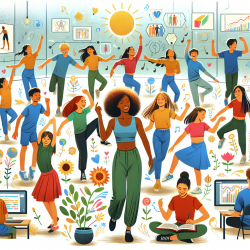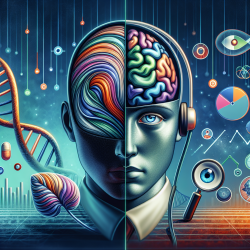In recent years, the focus on student well-being has taken center stage in educational settings. A compelling study titled "Stable and destabilised states of subjective well-being: dance and movement as catalysts of transition" (Atkinson & Scott, 2015) explores how dance and movement can significantly impact the subjective well-being of primary school students. Here, we delve into the findings and discuss practical ways practitioners can implement these insights to enhance their skills and support student well-being.
Understanding the Research
The study investigates how participation in dance and movement activities can act as a catalyst for transitions in subjective well-being among students. Conducted in an English primary school, the research highlights how these activities can disrupt the habitual practices of the classroom, enabling new ways of being, thinking, and feeling.
Key Findings
The research identifies several key outcomes:
- Increased Confidence: Students exhibited greater self-esteem and social confidence.
- Enhanced Focus: Dance and movement activities improved students' concentration and engagement in learning.
- Emotional Well-Being: Participants showed improved emotional regulation and overall happiness.
- Social Skills: Students developed better communication, cooperation, and trust-building skills.
Practical Implementation
Based on these findings, practitioners can take the following steps to integrate dance and movement into their therapeutic practices:
- Incorporate Movement into Daily Routines: Use simple dance exercises during breaks to help students transition smoothly between activities.
- Create Safe Spaces for Expression: Designate areas where students can freely express themselves through movement without judgment.
- Collaborate with Educators: Work closely with teachers to align dance activities with the curriculum, enhancing both learning and well-being.
- Focus on Inclusivity: Ensure that all students, regardless of their physical abilities, can participate and benefit from movement activities.
Encouraging Further Research
While the study provides valuable insights, there is always room for further research. Practitioners are encouraged to explore additional ways that dance and movement can support well-being and to share their findings with the broader educational and therapeutic communities.
Conclusion
Dance and movement hold tremendous potential for enhancing student well-being. By integrating these activities into therapeutic practices, practitioners can foster a more holistic approach to education and mental health. To read the original research paper, please follow this link:
Stable and destabilised states of subjective well-being: dance and movement as catalysts of transition.










